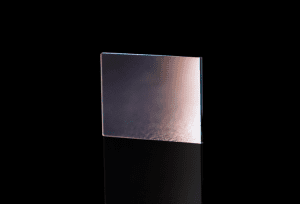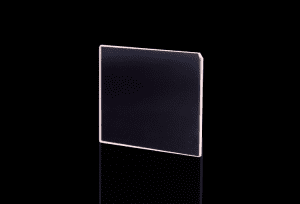High Reflectivity Mirrors
A high reflectivity mirror, often referred to as a supermirror, is a specialized type of dielectric mirror designed to achieve exceptionally high reflectivity while minimizing scatter and absorption of light. These precision mirrors are crucial for various laser applications, including beam steering, folding, and interferometry, and they find applications in industries such as security, defense, medical research, and process control. Here is an overview of high reflectivity mirrors and their characteristics:


High Reflectivity Mirrors
Types of High Reflectivity Mirrors
- Laser Line Mirrors: These mirrors are designed to reflect and redirect a narrow band of light centered on the laser’s wavelength or laser line. They are tailored for specific laser wavelengths and are commonly used in laser systems for beam manipulation.
- Broad Band Mirrors: Broad band mirrors, on the other hand, have reflectance over a wider spectral range. They are versatile mirrors suitable for applications that require reflection over a broader range of wavelengths.
Both types of high reflectivity mirrors are constructed using dielectric materials, consisting of multiple thin layers. Ion beam sputtering is a common technique used in the manufacturing process to achieve the desired reflectivity at specified wavelengths. To ensure high laser damage thresholds, high-quality fused silica substrates are often used in combination with durable reflective coatings.
Calculating Reflectivity of Supermirrors
Measuring the exact reflectivity of an ordinary mirror can be done using spectrophotometry, where transmission is measured and the reflectivity is inferred. However, for supermirrors with reflectivity levels exceeding 99.5%, the signal-to-noise ratio in spectrophotometry becomes problematic. In such cases, cavity ring down spectroscopy (CRDS) is a more precise method to determine the exact reflectivity.
CRDS involves directing a laser pulse into a resonant cavity formed by two highly reflective mirrors being tested. A detector placed after the second mirror measures the decay time of the reflected light. This method takes into account all forms of light loss, including transmission, absorption, and scatter, providing a more accurate assessment of reflectivity.

High Reflectivity Mirrors at Avantier
Avantier produces high reflectivity mirrors with a focus on exceptional performance and quality. These mirrors feature super-polished substrates and high surface quality to ensure optimal performance in demanding applications.
Quality control measures at Avantier include CRDS spectroscopy to verify the exact reflectance of every supermirror. In addition to reflectance, the company’s in-house metrology equipment allows for the measurement of various aspects of each optical component, including surface quality, flatness, absorption, polarization characteristics, and laser damage threshold.
Avantier offers a range of high-performance supermirrors in stock, including options with mirror mounts. They also provide the flexibility to produce custom high reflectivity mirrors tailored to specific customer specifications.
If you have unique requirements for high reflectivity mirrors or need mirrors for specialized laser applications, you can contact Avantier to discuss manufacturing limits or custom specifications.
Factory Standards
- Surface Quality: 20-10 S/D
- Material from DUV to IR
- Best R>99.995% @laser wavelength
- HR-266nm, HR-355nm, HR-532nm, HR-1064nm, HR-1550nm and custom wavelengths
- Custom dimension and shapes
Avantier is able to produce custom high reflectivity mirrors to fit your exact specification requirements for many types of applications. Please contact Avantier if you’d like to schedule a consultation or request for a quote on your next project.
WE CAN HELP YOU!
Contact us NOW for sales & expert advice.

